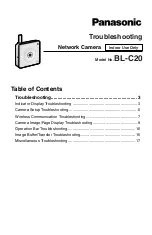
1-1
1
IPC Configuration
When configuring IPC, go to these sections for information you are interested in:
z
IPC Overview
z
Enabling IPC Performance Statistics
z
Displaying and Maintaining IPC
IPC Overview
Introduction to IPC
Inter-Process Communication (IPC) is a reliable communication mechanism among different nodes.
The following are the basic concepts in IPC.
Node
An IPC node is an entity supporting IPC; it is an independent processing unit. In actual application, an
IPC node corresponds to one CPU.
z
One centralized device has only one CPU, therefore corresponding to one node.
z
An Intelligent Resilient Framework (IRF) is an interconnection of several centralized devices, with
each member device corresponding to one node. Therefore, an IRF corresponds to multiple nodes.
z
Typically a distributed device is available with multiple boards, each having one CPU, some boards
are available with multiple CPUs. Some distributed devices may be available with multiple CPUs,
for example service CPU and OAM CPU. Therefore, a distributed device corresponds to multiple
nodes.
Therefore, in actual application, IPC is mainly applied on an IRF or distributed device; it provides a
reliable transmission mechanism between different devices and boards.
Link
An IPC link is a connection between any two IPC nodes. There is one and only one link between any
two nodes for packet sending and receiving. All IPC nodes are fully connected.
IPC links are created when the system is initialized: When a node starts up, it sends handshake packets
to other nodes; a connection is established between them if the handshake succeeds.
The system identifies the link connectivity between two nodes using link status. An IPC node can have
multiple links, each having its own status.
Channel
A channel is a communication interface for an upper layer application module of a node to communicate
with an application module of a peer node. Each node assigns a locally unique channel number to each
upper layer application module.
Data of an upper layer application module is sent to the IPC module through a channel, and the IPC
module sends the data to a peer node through the link. The relationship between a node, link and
channel is as shown in
Figure 1-1
.
Содержание S7902E
Страница 82: ...1 4 DeviceA interface tunnel 1 DeviceA Tunnel1 service loopback group 1 ...
Страница 200: ...1 11 DeviceB display vlan dynamic No dynamic vlans exist ...
Страница 494: ...ii Displaying and Maintaining Tunneling Configuration 1 45 Troubleshooting Tunneling Configuration 1 45 ...
Страница 598: ...ii ...
Страница 1757: ...4 9 ...
Страница 1770: ...6 4 ...
Страница 2017: ...2 11 Figure 2 3 SFTP client interface ...
Страница 2062: ...i Table of Contents 1 URPF Configuration 1 1 URPF Overview 1 1 What is URPF 1 1 How URPF Works 1 1 Configuring URPF 1 2 ...
Страница 2238: ...1 16 DeviceA cfd linktrace service instance 1 mep 1001 target mep 4002 ...
Страница 2442: ...2 4 Set the interval for sending Syslog or trap messages to 20 seconds Device mac address information interval 20 ...















































